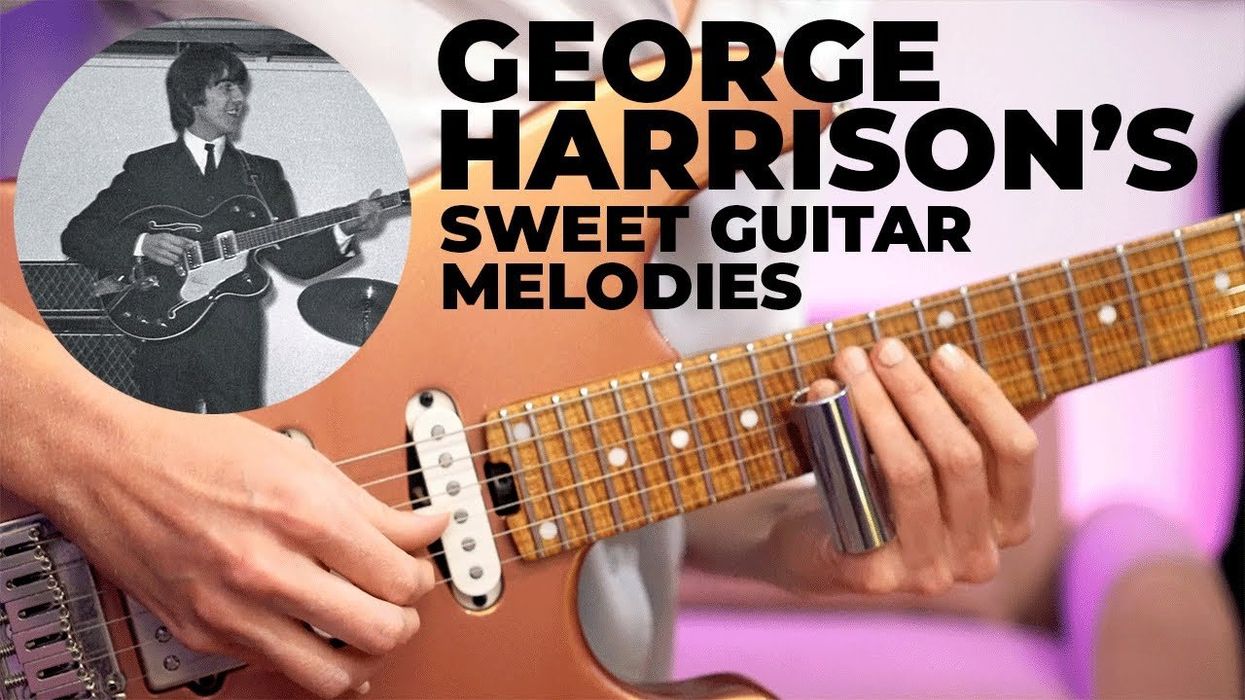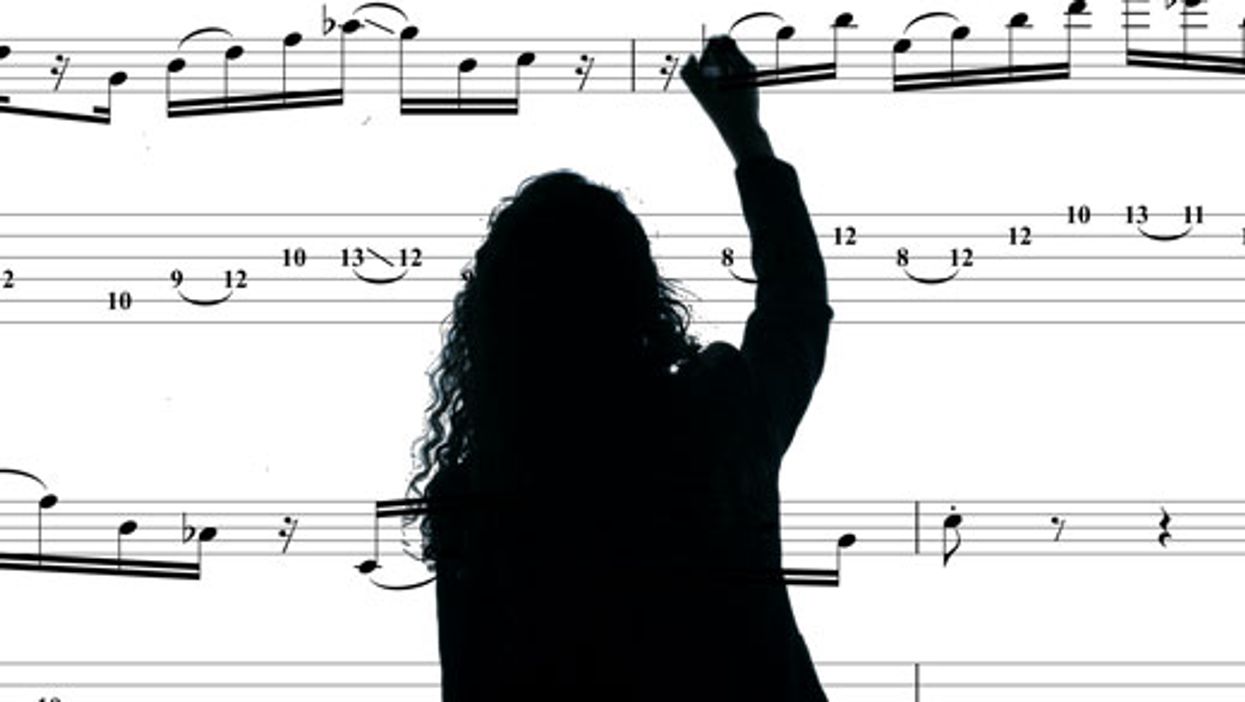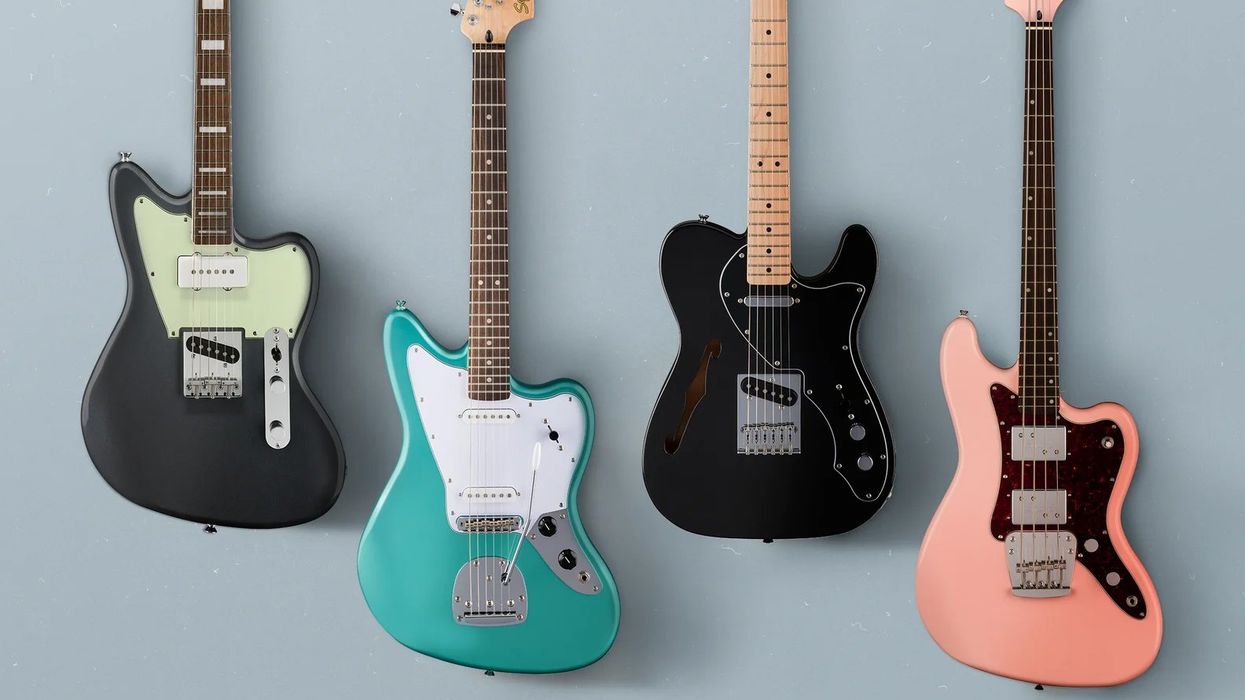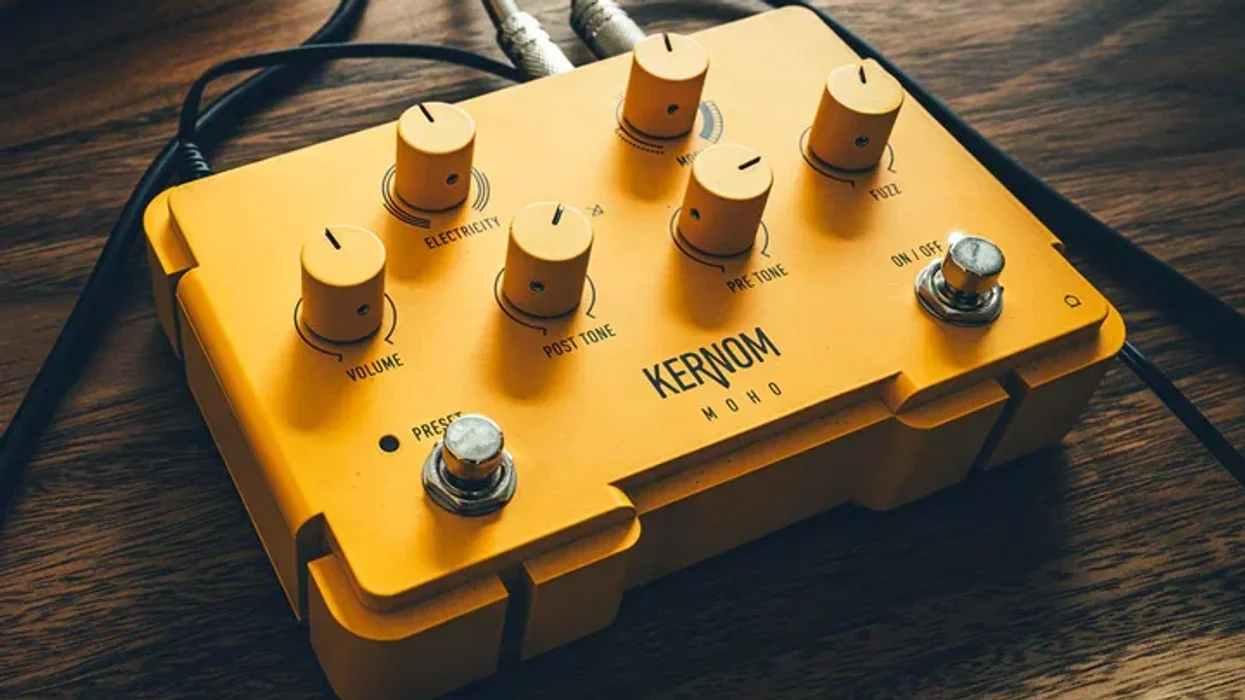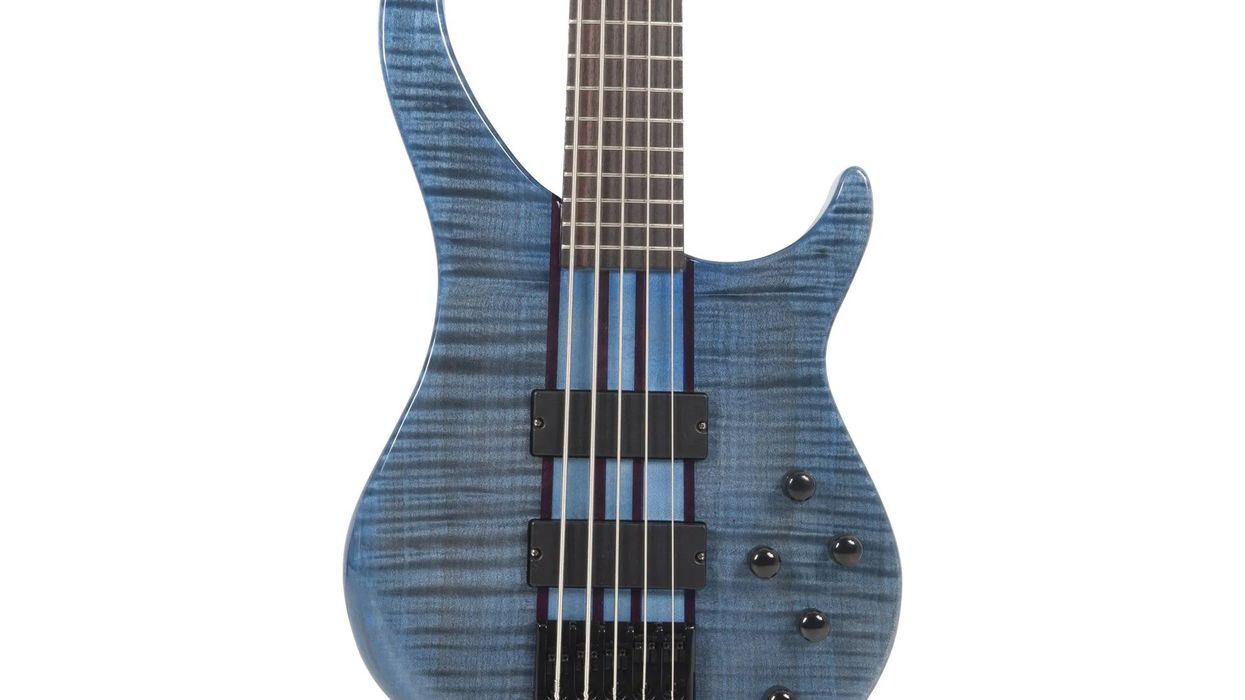Chops: Intermediate
Theory: Intermediate
Lesson Overview:
• Learn how to apply the modes of the major scale in alternative ways.
• Improve your ability to pivot between modes.
• Develop a better understanding of modal improvisation.
Click here to download a printable PDF of this lesson's notation.
Out of all the essential implements in a guitarist’s toolbox, having a firm grasp of major-scale modes might be the most important—especially for those of us who improvise.
There’s a vast array of sounds and ideas that can convey different emotions to a listener if they’re used properly. And in the realm of practice, knowing your modes is almost like a skeleton key to understanding an infinite number of other concepts. That’s a lot of power from scales that actually consist of the same seven notes rearranged in various ways.
Even with all that melodic and harmonic juice, however, we’ve all been at a jam session or a gig where we ended up in the tenth Dorian jam in a row. That can get a little tiresome. In this lesson we’ll look at some ways to “borrow” from other modes to spice up an otherwise lackluster jam situation. Fair warning: If you do this incorrectly, you’ll generate some pretty hairy, unpleasant notes. But if used in the right place, at the right time, and with the right kind of intent and style—and with other players who are good listeners—this technique can lead to some pretty cool, ear-grabbing ideas. Lets take a look.
Ex. 1 is centered on a common chord vamp in the key of A minor. The chord progression alternates between Am7 and E7#9 with a couple of Hendrix-inspired ornamentations thrown in for a little flair. On top of those chords, I’m thinking of basic A Dorian (A–B–C–D–E–F#–G) scale ideas. For me, the Dorian scale’s most distinctive characteristic is the 6, which is F# in this particular key. This note allows Dorian to be just a little more positive sounding than its sibling, Aeolian (aka the natural minor scale). I also play some pentatonic ideas, which is a perfectly suitable alternative anytime you’re using any of the three minor modes (Aeolian, Dorian, or Phrygian).
Click here for Ex. 1
Let’s take a closer look at this progression. If you look at the notes that make up these two chords, you’ll see neither of them contain an F#. Nor do they contain an F natural, which is the b6. Because the chords don’t contain either F or F#, I have free rein to play both Dorian and A Aeolian (A–B–C–D–E–F–G) ideas anytime I want over this progression. Check out Ex. 2, where I play over the same chord progression as before, but borrow from Dorian and Aeolian.
Click here for Ex. 2
Because of this progression’s simplicity, I have a lot of melodic freedom, which allows me to borrow from either Dorian or Aeolian whenever I want. That’s also good to know for when the shoe is on the other foot, and you’re the one comping behind someone else’s soloing. Adding interesting chords can help inspire the soloist’s ideas, but remember: The fancier you get, and the more tensions you put on each chord, the more you limit the soloist’s options, so pick those battles carefully!
In the next example (Ex. 3), I’m playing over a common Phrygian vamp. The chords alternate between Bm7 and C, which are completely diatonic to B Phrygian (B–C–D–E–F#–G–A). With the exception of a couple of approach notes, I’m pretty much playing completely in B Phrygian. It works perfectly fine, but lets pick apart these chords and figure out what we can do to inject some less predictable ideas into the soloing.
Over that Bm7 chord, I love the sound of B Dorian (B–C#–D–E–F#–G#–A), which adds a whole new character to the strictly Phrygian approach. But once the chord progression changes to C, that scale clashes with the notes that are in those chords. For either of those two chords, sticking with B Phrygian works a lot better. Unlike the Dorian example we looked at earlier, I can’t just borrow from another mode whenever I feel like it. In this situation, it depends very much on what chord is occurring under the soloing. Because of that, this is a bit trickier and requires some more practice.
Click here for Ex. 3
In Ex. 4, I’m playing over the same Phrygian progression as before, but at a much slower tempo. I’m playing straight up and down the scale with a steady stream of eighth-notes. Any time Bm7 occurs, I’m playing B Dorian, and whenever it’s C, I’m playing B Phrygian. I also verbally say which scale I’m changing to any time the chord changes. Try this exercise for a while to help you get a grasp of seamlessly changing back and forth between the two scales. This practice technique works great any time you’re trying to get the hang of soloing with multiple scales, so keep it in mind.
Click here for Ex. 4
Finally in Ex. 5, I take this concept and improvise over our Phrygian progression using both Dorian and Phrygian modes. It creates a cool ebb and flow of notes that almost sound like inhaling and exhaling with the chord changes.
Click here for Ex. 5
Let’s check out one last modal situation where this idea of borrowing other modes could come in handy. This time, we’ll use Mixolydian—every jam-band guitarist’s favorite scale. I love this mode. It has the positivity and happiness of the major, but the bluesy b7 gives it a little more attitude. For the chord progression, I’m going back and forth between D6 and C6, but I’m leaving an open high E string over the whole thing just because I think it sounds pretty.
Click here for Ex. 6
There’s definitely nothing wrong with this approach. Mixolydian sounds beautiful no matter what, and I’ve heard plenty of solos that stretch out for an eternity and never really stray from that one mode, yet they’re absolutely riveting. But let’s figure out some other options that could be a little more compelling.
Just as in the Phrygian example, for this chord progression we can’t switch scales whenever we feel like it. The scale has to make sense with the notes that are in each chord. So let’s try this: Over D6, use D Ionian (D–E–F#–G–A–B–C#). The major 7 (C#) against that chord is really beautiful and really adds a cool character. Or if you want to get a bit weirder and more out there, try using D Lydian (D–E–F#–G#–A–B–C#) over D6. Once the chord progression changes to C6, just stick to D Mixolydian.
Check out Ex. 7, where I apply this approach to the same chord progression as before. Also, note that I use the Ionian scale over D6 in some cases, and also use the Lydian scale instead later on, which has a slightly weirder vibe to it.
Click here for Ex. 7
If you want to check out a great example of one of the masters making use of this idea in a Mixolydian context, check out Jimmy Herring’s cover of “Within You, Without You” by the Beatles.
Lastly, it’s important to remember not to overuse this concept. You’ll notice that even in the examples where I’m playing the new scales, I still have some diatonic ideas in there too. Each mode is like an ingredient that adds a whole new flavor to the recipe. But if you add too much of any ingredient, nobody can even tell what they’re eating any more. Also, don’t take my advice as the end all. Do it your own way and find your own style of incorporating it into your playing. Have fun!


